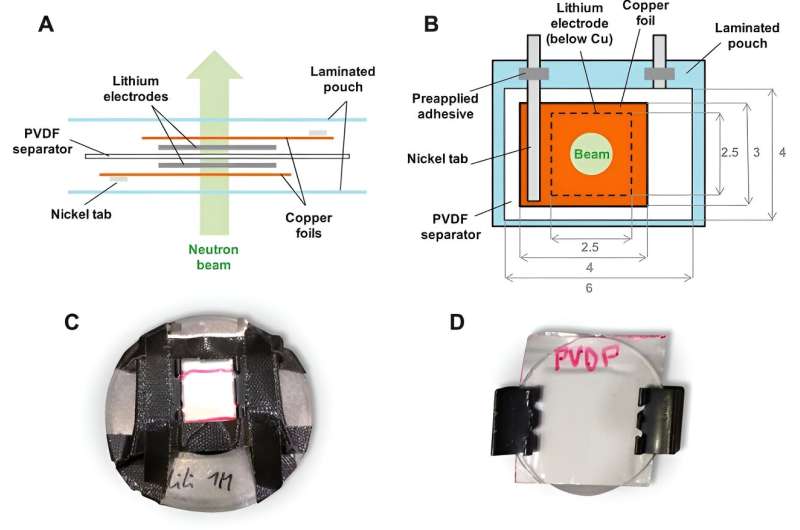ANSTO scientists have used innovative neutron scattering to decode and prevent hazardous microstructures in lithium batteries, which is crucial for next-gen technologies.

Although ubiquitous in portable gadgets and electric cars, the energy storage of lithium-ion batteries (LIBs) doesn’t meet the needs of various emerging advanced technologies. Using pure lithium metal as electrodes could significantly enhance the battery’s energy storage capacity; however, the formation of lithium microstructures on the metal surface poses a risk.
Scientists from the Australian Nuclear Science and Technology Organisation (ANSTO) have employed neutron scattering methods to probe the development of detrimental lithium formations in rechargeable lithium-ion batteries (LIBs).
Prior investigations into disassembled batteries revealed the presence of various structural forms such as “whiskers,” “moss,” and “dendrites.” Whiskers are akin to minuscule spikes. Moss has a spongy layer-like appearance, while dendrites are characterized by their slender and elongated shape. It is these sharp-edged structures that are the primary culprits behind battery issues.
The team employed small-angle and ultra-small-angle neutron scattering (SANS and USANS) techniques with their Quokka and Kookaburra instruments at the Australian Center for Neutron Scattering to investigate complex battery lithium structures. The researchers pointed out that these methods are particularly revealing as they can discern the size and shape of lithium structures without dismantling the battery. Due to the various components within a battery, they collected SANS and USANS data from the different parts to extract information related explicitly to the lithium structures.
With this data, they designed a symmetrical pouch cell that was particularly suited for observing the lithium deposition processes during battery operation. The investigators found that SANS and USANS provided a more precise and uncomplicated analysis of the lithium structures compared to other investigative techniques, such as X-ray imaging, microscopy, or gas adsorption, streamlining the research process.
The study paves the way for further research to determine how various factors—such as electric current levels, charge durations, and the cyclical nature of lithium deposition and dissolution—affect the surface characteristics and the interfacing distances in the deposited lithium.
Reference: Christophe Didier et al, Direct In Situ Determination of the Surface Area and Structure of Deposited Metallic Lithium within Lithium Metal Batteries Using Ultra Small and Small Angle Neutron Scattering, Advanced Energy Materials (2023). DOI: 10.1002/aenm.202301266







